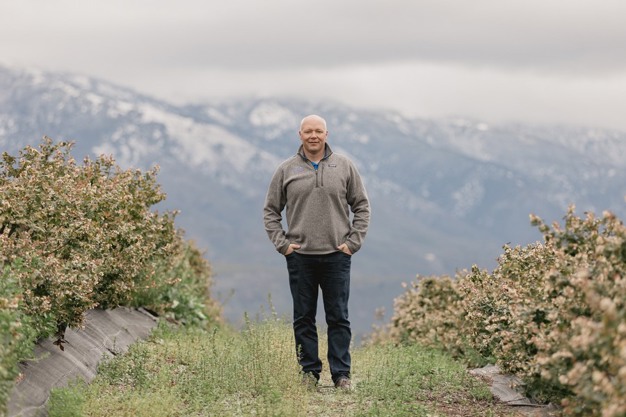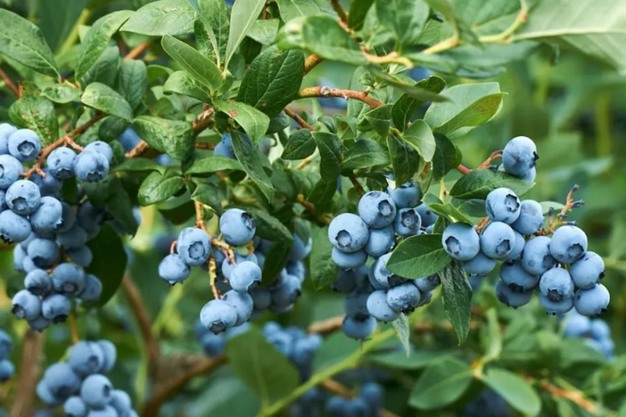Blueberries have come a long way in five years. Kasey Cronquist knows. In fact, the president of the North American Blueberry Council (NABC) and the U.S. Highbush Blueberry Council (USHBC) recently celebrated his fifth anniversary in this role and looks back at how the industry has developed in that time.
Q: To start, could you reflect on some of the key changes in the industry that you have seen in your five years with these organizations?
A: A key change has been the increase in improved consistency of the supply of blueberries. Industrywide there has been a big effort to make sure consumers have increasingly better access to blueberries year-round. The next phase of growth will be improving the consistency of quality – also a big focus for this industry. It's about ensuring that one clamshell sells the next clamshell.
Q: On that quality note, is that about variety development or the better conditions now for growers to do what they need to do?
A: All of the above. It starts with genetics. From genetics through post-harvest to even considering transit – we've been working on so2 pads to maintain quality consistency in the transit time. These evolutions make sure that consumer experiences are top-notch after the blueberries leave the farm. Before it was about getting blueberries to market and now we're seeing a real expectation of the command of quality.
 Kasey Cronquist
Kasey Cronquist
Q: How has consumption developed in the past five years?
A: New genetics are helping bring people back to the category. However, we also should recognize that the industry has done a great job in developing the market and demand. The industry remains united in driving global demand and fulfilling the vision that came out of our strategic plan to make blueberries the world's favorite fruit. That sounds audacious, but in reality, it's the vision for what blueberries can be.
Q: So is there more work ahead to increase consumption?
A: The council has been expanding our efforts to grow consumption. We're trying to bring in more resources to reflect the fact that these dollars spent in marketing efforts bring value, and we've been doing that over the last five years in a few new areas. One area is data insights and another is retail marketing. That hasn't been something we'd done before and now that we're in it, we're finding some really great examples of how we can reach consumers and bring them to the category.
Q: How has the relationship between domestic production and imports developed in the past five years?
A: Our organization represents domestic production, but we also represent production from, Peru, Mexico, Chile, and Canada, and working all together through a united effort has been a success over the last five years. These origins are united in their effort to get consumers to come to the category.
We've worked as an industry to understand each other's strengths in terms of seasonality and availability as best we can, recognizing that the fundamental reason imports are here is that domestic production cannot supply the market demand that exists, and certainly not year-round. There's a real need to pull in fruit into areas of low supply, and our job is to unify that effort to help drive year-round demand for the category.
 Cronquist says new genetics are helping bring people back to the category.
Cronquist says new genetics are helping bring people back to the category.
Why unification continues to work is that there's so much runway. Statistically with consumers, of those people who eat blueberries today, households are only eating 6.4 pounds per year. We've invested a lot on the supply side, but we need to make sure that as that supply comes in, we work as an industry to market to the demand side. Our challenge is making sure the demand curve stays ahead of the supply curve.
Q: What have been some of the other challenges in your five years?
A: One has been to remain united on the focus of growing the pie. There's a home for every blueberry if we have the resources to market it. It's growing the pie and not fighting for slices.
There are many opportunities to still grow the per capita consumption – such as increasing the frequency of consumption and moving beyond breakfast consumption alone for blueberries. It's about playing a bigger part in the snacking category, for example. Blueberries can compete with anything in a grocery store in the snacking category. There's also a convenience in blueberries and we haven't really tapped into communicating or marketing that in a snack. In our category, 20 percent of households make up 60 percent of the dollars. There's a super-fan base who loves blueberries, but we also have to get beyond that fan base.
Q: Finally, let's say you had to step away from this role today. What would be your legacy?
A: When I first walked in, there was a battle on two fronts: getting through COVID and, at the time, our industry was also mired in a 2O1 investigation.
These past five years have been about making lemonade out of these lemons. There were a lot of things happening that were big and beyond the council, and it's been about the strategic refresh of both councils, establishing clear strategic plans, bringing a group of industry stakeholders together, and bringing the industry back to work together. This industry should take great pride in the fact that other industries might have fallen apart after going through all of that.
Instead, this group came back together to focus on what the problems were, how to work together to solve them, and then how to fund that problem-solving. We've grown into channel market development that we weren't in before. We've given business intelligence tools back to growers that they didn't have before. We've created an advocacy platform for the industry. All that together makes up any sort of legacy that reflects positively on the industry.
There's also something to be said about the support out there right now for what we're working on that was reflected in our last referendum. It was a record-breaking turnout – it was over half a billion pounds of berries represented participating in the vote. It was 93 percent of the volume and 84 percent of the entities, and those were pretty good numbers. We'd like to build off of that.
 For more information:
For more information:
Kristy Babb
North American Blueberry Council
Tel: +1 (916) 461-2205
kbabb@nabcblues.org
https://nabc.blueberry.org/
